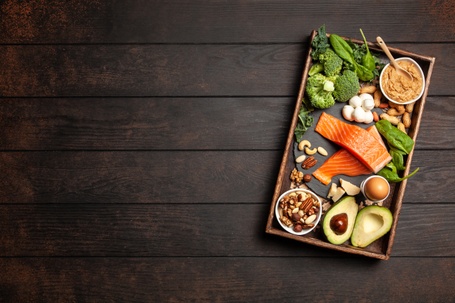Dietary management of food allergy

Food allergy is an abnormal response to a food triggered by your body’s immune system.
In adults, the foods that most often trigger allergic reactions include fish, peanuts, and tree nuts, such as walnuts. Problem foods for children can include eggs, milk, peanuts, tree nuts, soy, and wheat.
The allergic reaction may be mild. In rare cases it can cause a severe reaction called anaphylaxis. Symptoms of food allergy include
- Itching or swelling in your mouth
- Vomiting, diarrheal, or abdominal cramps and pain
- Hives or eczema
- Tightening of the throat and trouble breathing
- Drop in blood pressure
At Lina’s and Dina’s Diet Center nutritionists use a detailed history, and elimination diet to diagnose food allergies. In Lina’s and Dina’s ,nutritionist work to prevent the symptoms of food allergy. After identifying the foods which you are sensitive to, they remove them from your diet.
To prevent food allergy you must :
- Learn how to read food labels and make sure everyone in the family can, too.
- Separate safe and unsafe food. Assign specific shelves in the pantry and refrigerator and store all foods in sealed containers.
- Label either the problem foods or the safe ones—whichever is easier. Color-coded stickers can help here.
- Stock up on food essentials and have safe substitutes on hand.
- Have separate sets of utensils for handling safe and unsafe foods. Some families even use separate dishes (usually designated by different colours).
Finally when a family member is diagnosed with food allergies, life at home becomes somewhat more challenging. By changing the way you shop, cook and clean, you can enjoy meals that are safe for everyone. Lina’s and Dina’s center try the best to prepare healthy meals for the food allergic patients ,which mean it is the best choice for you if you are suffering from food allergy .
To know more about our programs, you can check our website:
حساسية الطعام
حساسية الطعام هي استجابة غير طبيعية لطعام لا يستقبله جهاز المناعة في الجسم.
بالنسبة للبالغين ، فإن الأطعمة التي تسبب الحساسية غالبًا تشمل الأسماك والفول السوداني وجوز الأشجار ، مثل الجوز.أما بالنسبة للاطفال فيمكن أن تشمل الأطعمة التالية كالبيض والحليب والفول السوداني وجوز الأشجار وفول الصويا والقمح.
قد يكون رد الفعل التحسسي خفيفًا. أما في في حالات نادرة يمكن أن يسبب رد فعل شديد يسمى الحساسية المفرطة. تشمل أعراض حساسية الطعام
حكة أو تورم في فمك
القيء أو الإسهال أو تقلصات وألم البطن
ضيق في الحلق وصعوبة في التنفس
انخفاض ضغط الدم
في مركزلينز أن دينز ، يستخدم أخصائيو التغذية تاريخًا مفصلاً ونظام الإقصاء الغذائي لتشخيص حساسية الطعام. يعمل أخصائيو التغذية في المركز على الوقاية من أعراض حساسية الطعام. بعد التعرف على الأطعمة التي تسبب الحساسية لديك ثم يتم إزالتها من نظامك الغذائي.
لمنع حساسية الطعام يجب عليك
تعلم كيفية قراءة ملصقات الطعام وتأكد من أن كل فرد في الأسرة يستطيع ذلك أيضًا
افصل بين الأطعمة الآمنة وغير الآمنة. خصص منطقة محددة في المخزن والثلاجة وقم بتخزين جميع الأطعمة في حاويات محكمة الغلق
قم بتسمية الأطعمة التي بها مشكلات أو الأطعمة الآمنة .و يمكن أن تساعد الملصقات الملونة في ذلك
قم بتخزين الضروريات الغذائية وبدائل آمنة في متناول اليد
امتلك مجموعات منفصلة من الأواني للتعامل مع الأطعمة الآمنة وغير الآمنة
أخيرًا ، عندما يتم تشخيص أحد أفراد الأسرة بحساسية تجاه الطعام ، تصبح الحياة في المنزل أكثر صعوبة إلى حد ما. من خلال تغيير طريقة التسوق والطهي والتنظيف ، يمكنك الاستمتاع بوجبات آمنة للجميع. يبذل مركزلينز اند دينز قصارى جهده لإعداد وجبات صحية لمرضى الحساسية من الطعام ، مما يعني أنه الخيار الأفضل لك إذا كنت تعاني من حساسية الطعام.












